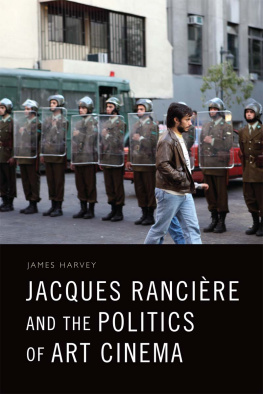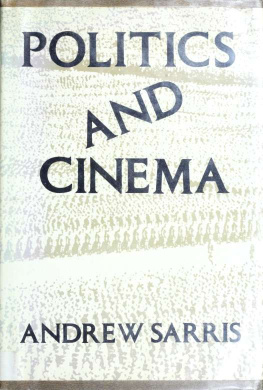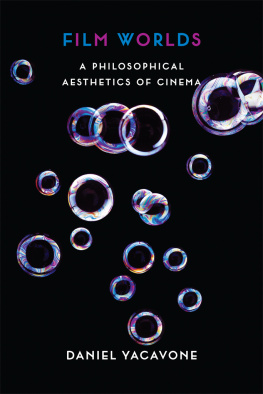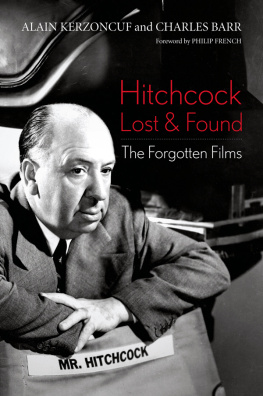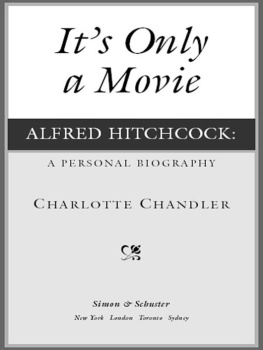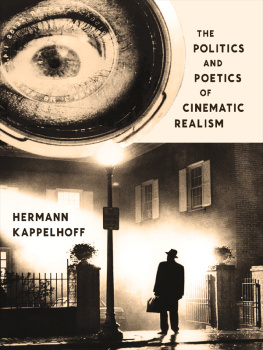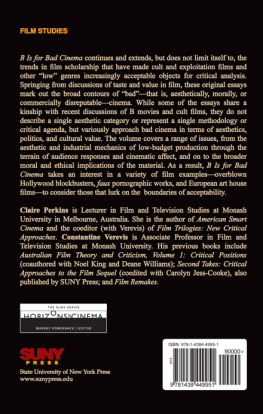Rancière - The Intervals of Cinema
Here you can read online Rancière - The Intervals of Cinema full text of the book (entire story) in english for free. Download pdf and epub, get meaning, cover and reviews about this ebook. City: London, year: 2014, publisher: Verso Books, genre: Detective and thriller. Description of the work, (preface) as well as reviews are available. Best literature library LitArk.com created for fans of good reading and offers a wide selection of genres:
Romance novel
Science fiction
Adventure
Detective
Science
History
Home and family
Prose
Art
Politics
Computer
Non-fiction
Religion
Business
Children
Humor
Choose a favorite category and find really read worthwhile books. Enjoy immersion in the world of imagination, feel the emotions of the characters or learn something new for yourself, make an fascinating discovery.

- Book:The Intervals of Cinema
- Author:
- Publisher:Verso Books
- Genre:
- Year:2014
- City:London
- Rating:5 / 5
- Favourites:Add to favourites
- Your mark:
- 100
- 1
- 2
- 3
- 4
- 5
The Intervals of Cinema: summary, description and annotation
We offer to read an annotation, description, summary or preface (depends on what the author of the book "The Intervals of Cinema" wrote himself). If you haven't found the necessary information about the book — write in the comments, we will try to find it.
The Intervals of Cinema — read online for free the complete book (whole text) full work
Below is the text of the book, divided by pages. System saving the place of the last page read, allows you to conveniently read the book "The Intervals of Cinema" online for free, without having to search again every time where you left off. Put a bookmark, and you can go to the page where you finished reading at any time.
Font size:
Interval:
Bookmark:



This book is supported by the Institut franais as part of the Burgess programme
(www.frenchbooknews.com)
This English-language edition first published by Verso 2014
Translation John Howe 2014
First published as Les carts du cinma
La fabrique ditions
All rights reserved
The moral rights of the author have been asserted
Verso
UK: 6 Meard Street, London W1F 0EG
US: 20 Jay Street, Suite 1010, Brooklyn, NY 11201
www.versobooks.com
Verso is the imprint of New Left Books
ISBN-13: 978-1-78168-606-5 (PBK)
ISBN-13: 978-1-78168-607-2 (HBK)
eISBN-13: 978-1-78168-608-9 (US)
eISBN-13: 978-1-78168-693-5 (UK)
British Library Cataloguing in Publication Data
A catalogue record for this book is available from the British Library
Library of Congress Cataloging-in-Publication Data
A catalog record for this book is available from the Library of Congress
v3.1
One day, for the first time since leaving school long ago, I was awarded a prize. But this time the prize, for my book La Fable cinmatographique, was awarded in Italy. The conjunction seemed to me to say something about my relationship with cinema: for in various ways, that country had been instrumental in educating me in the seventh art. There was Rossellini of course, and that winter evening in 1964 when I had been over-whelmed by Europa 51, while experiencing an equally strong resistance to that tale of the bourgeoisie acceding to sanctity through the working class. There were the books and magazines that a cinephile Italianist friend used to send me in those days, from which I tried simultaneously to learn cinema theory, Marxism and the Italian language. And then there was the strange back room in a Neapolitan pub where, on a sort of badly hung sheet, I watched James Cagney and John Derek speaking Italian in a dubbed monochrome version of a Nicholas Ray film called A lombra del patibolo, better known to movie purists as Run for Cover.
If these memories surged back when I received that unexpected prize, it was not for simple circumstantial reasons; and if I mention them today, it is not out of misty-eyed nostalgia for years gone by. It is because they outline quite accurately the particular nature of my approach to cinema. Cinema is not an object on which I could have leaned as a philosopher or critic. My relationship with it is a play of encounters and distances which can be discerned through these three memories. They summarize the three types of distance through which I have tried to talk about cinema: between cinema and art, cinema and politics, cinema and theory.
The first of these divergences, symbolized by the wayside backroom theatre showing Nicholas Ray, is that of cinphilie, or the love of cinema. Cinephilia is a relationship with cinema governed by passion rather than theory. It is well known that passion lacks discrimination. Cinephilia was a jumbling of the accepted criteria. A jumbling of venues: a zigzag line between the cinmathques where the memory of an art was preserved and the old movie theatres in remote parts of town showing derided Hollywood movies of all kinds, where cinephiles sought and unearthed their treasure in the intensity of a Western cavalcade, a bank raid or childs smile. Cinephilia was a link between the worship of art and the democracy of entertainment and emotion, challenging the criteria through which cinema was gaining acceptance as high culture. It affirmed that the greatness of cinema lay not in the metaphysical high-mindedness of its subjects or the visual impact of its plastic effects, but in an imperceptible difference in the ways of putting traditional stories and emotions into images. It called that difference mise en scne staging, direction, production without being too sure what it meant. Not knowing what it is that one loves and why one loves it is, they say, a characteristic of passion. It is also the path to a certain kind of wisdom. Cinephilia used to discuss the objects of its passion in terms of a rather rough-and-ready phenomenology of mise en scne seen as establishing a relation to the world. But in the process, it questioned the dominant categories that existed for thinking about art. Twentieth-century art is often described in terms of the modernist paradigm: identification of the modern artistic revolution with the concentration of each art on its own medium, in contrast to the mercantile aestheticization of images from life. That sort of modernity appeared to crumble during the 1960s under the combined effects of political suspicion focused on artistic autonomy and the ever-growing avalanche of commercial and advertising forms. But this view that modernist purity succumbed to the post-modern anything goes ignores the fact that such blurring of dividing lines developed in a more complex way in other settings, including cinema. Cinephilia questioned the categories of artistic modernism not by deriding high art but by restoring a closer and less obvious linkage between the types of art, the emotions of the narrative, and by discovering the splendour that the most commonplace objects could acquire on a lighted screen in a dark auditorium: a hand lifting a curtain or fumbling with a door handle, a head leaning out of a window, a fire or car headlights in the night, drinking glasses glittering on a bar it introduced us to a positive understanding, in no way ironic or disillusioned, of the impurity of art.
Probably it did so because of the difficulty in reconciling the sense, the rationale behind its emotions with the reasoning needed to navigate politically through the worlds conflicts. The smile and gaze of the young John Mohune in Moonfleet establish a form of equality with the scheming of his false friend Jeremy Fox; but how was a student discovering Marxism in the early 1960s to relate that to the struggle against social inequality? The obsessional quest for justice by the hero of Winchester 73 hunting the murdering brother, the joined hands of the outlaw Wes McQueen and the wild girl Colorado on the rock where they are cornered by the forces of order in Colorado Territory what relation did they have to the struggle of the new workers world against the world of exploitation? To bring them together one needed to postulate a mysterious equivalence between the historical materialism underlying the workers struggle and the implicit materialism of the cinematic relation of bodies to their environment. It is at this very point that the vision conveyed by Europa 51 introduces a problem. Irenas progression from bourgeois apartment to working-class suburban tower block and the factory floor seemed at first to connect the two materialisms perfectly. The physical advance of the heroine, venturing gradually into unfamiliar zones, made the progress of the plot and the camera work coincide with the progressive uncovering of the world of labour and oppression. Unhappily, the fine straight materialist line broke when Irena went up a flight of stairs leading to a church and then descended towards a consumptive prostitute, charitable good works and the spiritual itinerary of sainthood.
To deal with that, one had to say the materialism of the mise en scne had been deflected by the filmmakers personal ideology, a re-run of the old Marxist argument praising Balzac for showing the realities of capitalist society despite holding reactionary views. But the uncertainties of the Marxist aesthetic then redoubled those of the cinephile aesthetic, by suggesting the only true materialists are materialists unintentionally. This paradox seemed to be confirmed, in the same period, by my appalled viewing of
Font size:
Interval:
Bookmark:
Similar books «The Intervals of Cinema»
Look at similar books to The Intervals of Cinema. We have selected literature similar in name and meaning in the hope of providing readers with more options to find new, interesting, not yet read works.
Discussion, reviews of the book The Intervals of Cinema and just readers' own opinions. Leave your comments, write what you think about the work, its meaning or the main characters. Specify what exactly you liked and what you didn't like, and why you think so.

